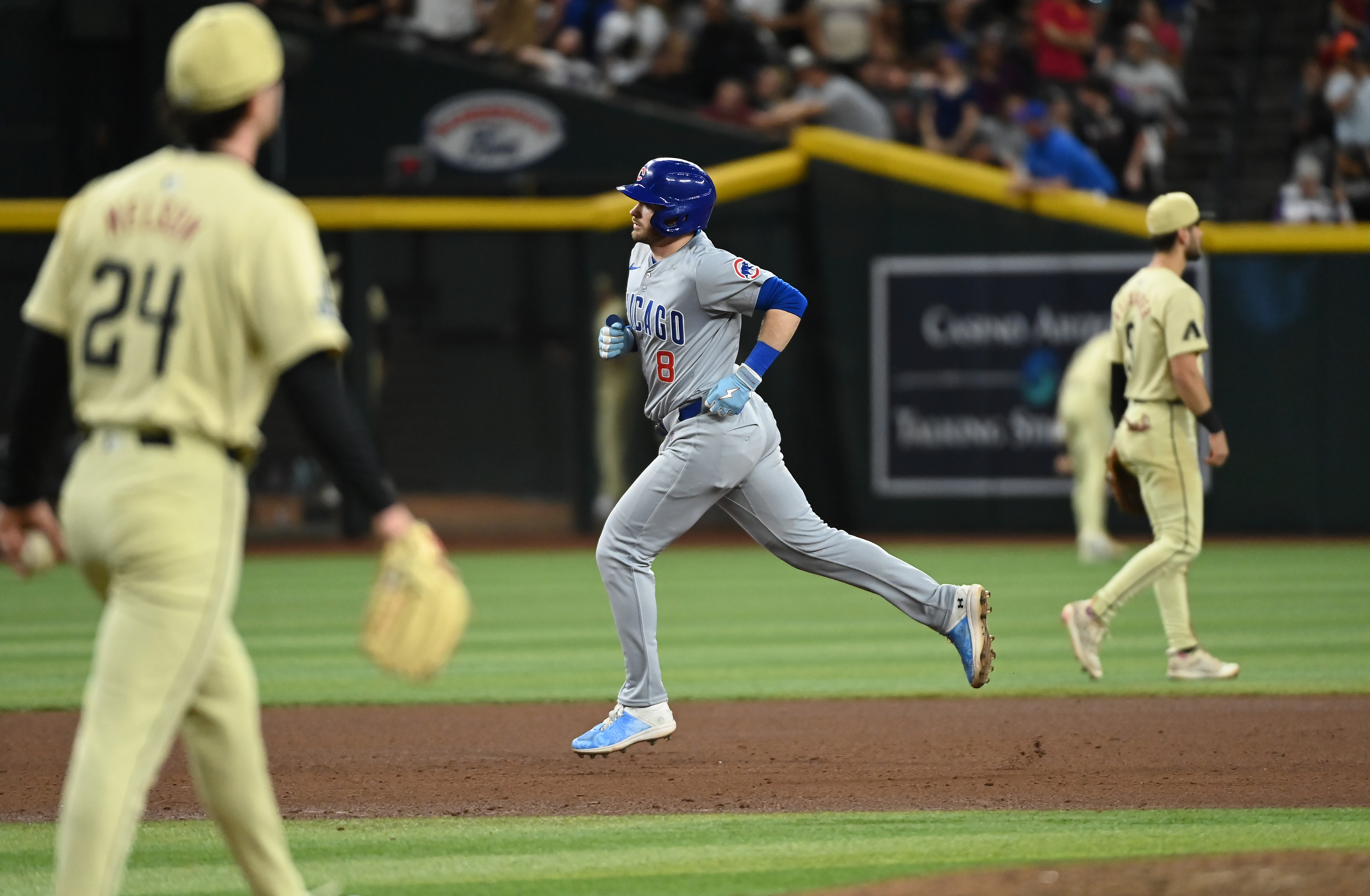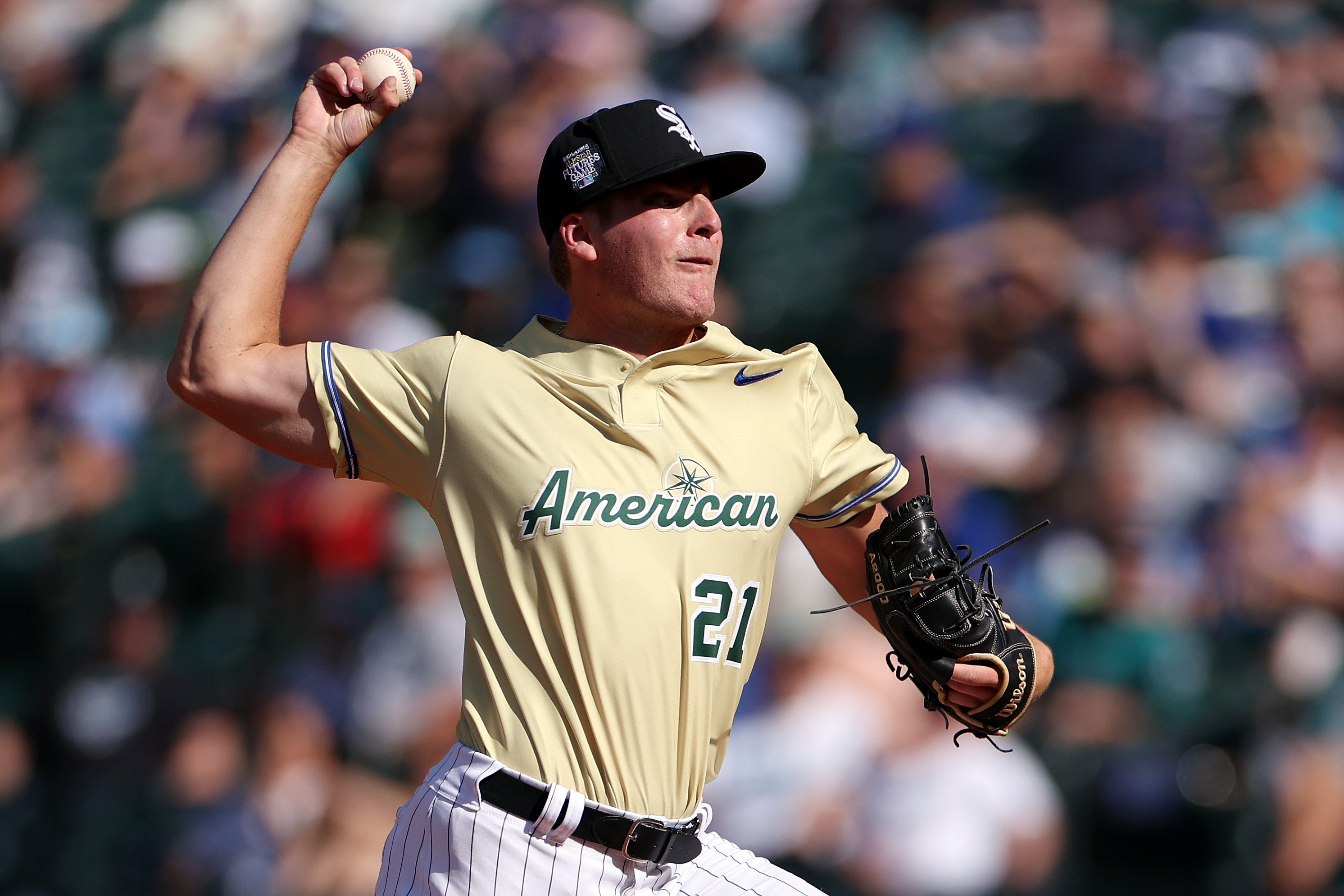HOUSTON — Tony La Russa didn't drive in five runs in the bottom of the seventh inning Friday.
But the way some Chicago White Sox fans were reacting to everything that went against their team in Game 2 of the American League Division Series, you'd think La Russa was the biggest bat in the Houston Astros' lineup.
In reality, there were several questions about the choices the South Side skipper made in his team's 9-4 defeat that sent it to a 2-0 series deficit. And while the excellence of a championship-caliber Astros team had a lot more to do with the White Sox' second straight October loss at Minute Maid Park, those decisions can still be explored.
Stay in the game with the latest updates on your beloved Chicago sports teams! Sign up here for our All Access Daily newsletter.
RELATED: Championship-caliber Astros reason Sox are in ALDS hole
Why did Lucas Giolito go back out for the fifth inning?
Giolito started the game brilliantly, striking out the first three hitters he faced. But the first was his only easy inning. He walked two batters and threw a wild pitch in the second inning, giving up two runs as a direct result. He escaped another scoring chance for the Astros in the third before issuing another walk in the fourth.
In the bullpen-happy world of postseason baseball, that maybe should have been enough for his day to be done, even though he's the staff ace with a history of success against the Astros. But La Russa left Giolito in the game, only for him to walk two more batters in the fifth, who both scored once the right-handed starter was out of the game.
MLB
So why did La Russa stick with Giolito?
"He was pitching really well," La Russa said. "He had worked hard at that point. He's got a two-run lead, last thing he's trying to do is walk guys. So that shows you he's right near the end for me."
Why was Garrett Crochet the first guy out of the bullpen?
La Russa replaced Giolito with Crochet, who was used the day prior in Game 1, despite having a whole mess of his finest relief pitchers at his disposal. Crochet stepped into the jam Giolito left him with, two runners aboard with only one out.
Crochet walked Yordan Álvarez, the first batter he faced, and then gave up a two-run single to Yuli Gurriel, which tied the game at 4.
"I liked the matchup of one of our lefties against Álvarez," La Russa said, "and he walks him."
Crochet wasn't really the problem in that inning, as Giolito had put the runners on base before Crochet even came in. Fans might have seen a critical moment in the game and just wanted a more dependable reliever than Crochet — Michael Kopech, perhaps; more on him in a sec — but La Russa played the matchup with plenty of outs to get from there and plenty of opportunities to use his other top relievers, which he ended up doing.
Crochet was increasingly part of the White Sox' high-leverage relief mix down the stretch of the season, and it was no surprise to see La Russa turn to him there. It didn't work, though, even if the big hit off Crochet was a ground ball through the infield.
Why didn't Michael Kopech pitch in Game 2?
Good question.
Kopech was one of the White Sox' finest relief pitchers throughout the campaign, and he had recently been stretched out to throw multiple innings at a time. With Giolito exiting in the fifth inning, there was an opportunity to turn to Kopech to eat up a few innings before, the hope was, handing the ball to Craig Kimbrel and Liam Hendriks at game's end.
But new relievers kept stepping into Game 2, and none of them was Kopech.
La Russa obviously wanted a lefty to face Álvarez in the fifth, but there were other times when Kopech might have been a quality option. Instead, the fireballer stayed in the 'pen.
A thought that occurred before the game even started was that the White Sox might have been saving Kopech for Game 3 or 4. La Russa said Friday that the team was still finalizing plans for who would be the starting pitchers in those games, deciding between Dylan Cease and Carlos Rodón for Game 3. Rodón, though, is dealing with health issues that could limit him in any start, sparking the speculative thought that the White Sox might only be comfortable starting him if they could back him up with Kopech in the same game.
But La Russa said that wasn't the thinking behind Kopech not appearing in Game 2.
"We were going to play the game today, and if we needed him to win the game, we would have pitched him," La Russa said. "But whatever happens on Sunday, we've got his length there. That's another big asset for us. We didn't have to waste it.
"He could have pitched an inning today and still been available. He'll be even more available."
That's likely not an explanation that will please White Sox fans.
Why did the White Sox' defensive alignment allow for so many Astros hits?
The Astros put on a clinic during Game 2 in hitting 'em where they ain't.
That's to say that they found the holes in the White Sox infield time and time again. That was of particular frustration for White Sox fans in the seventh inning, when Aaron Bummer came in and did what he does, get ground balls for his infielders to suck up. But the grounders weren't finding his infielders' gloves. And it resulted in the game-winning rally.
Three of the four hitters Bummer faced singled on ground-ball hits up the middle, the third of those hits scoring the tie-breaking run.
La Russa was scorched on Twitter for the way his defenders were positioned, but this truly seemed to be a case of the Astros coming up with the hits they needed to at precisely the right time. And certainly White Sox defenders were positioned where they were for a reason.
La Russa was asked about it after the game, about the Astros potentially hitting where White Sox infielders weren't on purpose.
"You'd have to ask them. I'm not sure they're that good," he said. "Defensive positioning, a lot of the times, you look at the pitcher and you look at the frequency of where the ball goes. So you position them. But they did find the holes."
Why did César Hernández pinch-hit for Adam Engel?
This one might have been the most consequential decision La Russa made Friday.
In a tie game, La Russa pinch-hit for his No. 9 hitter, removing Engel from the game in favor of Hernández. Hernández struck out, nothing terribly dissimilar from the results of the six hitless at-bats Engel had taken in the series to that point.
But the decision proved costly in the bottom of the inning, when a two-out smash by Carlos Correa off Craig Kimbrel went past a leaping Leury García for a two-run double that boosted the Astros' lead to 7-4 and kept the inning alive for an ensuing two-run homer. It wasn't difficult to imagine Engel, a defensive whiz in the outfield who was in right until being lifted for the pinch-hitter, making the play and keeping the deficit at one while sending the game to the eighth.
More curious, though, than being comfortable with García in right was preferring Hernández offensively.
Engel didn't play much during the regular season, appearing in only 39 games while bedeviled by nagging injury woes. But when he did, he was effective with the bat, posting an .832 OPS and having particular success against right-handed pitchers like Astros reliever Ryne Stanek.
Hernández, meanwhile, never got his bat going after coming to the South Side in a deadline trade with the Cleveland Indians, slashing a nasty .232/.309/.299 in his 53 regular-season games with the White Sox.
Prior to the playoffs beginning, it seemed the second base-right field tandem of García and Engel was the superior option to one featuring Hernández, unless his Gold Glove defense was necessary late in games.
Friday, the defensive effect in right field proved costly.


